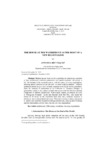The House at the Waterfront as the Root of a New Regionalism

View/
Use this link to cite
http://hdl.handle.net/2183/16102
Except where otherwise noted, this item's license is described as Reconocimiento-NoComercial-SinObraDerivada 4.0 Internacional
Collections
- Investigacion (ETSAC) [511]
Metadata
Show full item recordTitle
The House at the Waterfront as the Root of a New RegionalismAuthor(s)
Date
2013Center/Dept./Entity
Universidade da Coruña.Departamento de ComposiciónCitation
Bulletin of the Polytechnic Institute of Iasi. Construction and Architecture Section, nº 5/2013, págs. 95-110
Abstract
Modern houses built on the waterfront are interesting examples of how architecture combines constructive and spatial evolution that occurs in the first decades of the twentieth century with the search for a new regionalism, showing special attention to the site and to local building tradition. Different architects choose to give their personal response to the house on the waterfront, from the pioneers of modernism as Le Corbusier or Giuseppe Terragni to generations linked to the modern revision that occurs with the last International Congresses of Modern Architecture. Within these authors, we analyse the work of Portuguese Fernando Tavora and Spanish Xosé Bar Boo, who raised the theme of the house on the waterfront from their early academic projects to develop it later in his professional career. They have become modern conquerors of natural and symbolic boundaries through architecture, making their buildings and the relationship with the place, the root of a new regionalism.
Keywords
Architecture
20th century
Modernity
Housing
Regionalism
20th century
Modernity
Housing
Regionalism
Rights
Reconocimiento-NoComercial-SinObraDerivada 4.0 Internacional
ISSN
1224-3884






